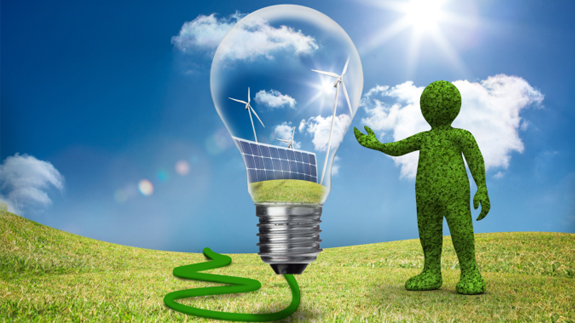Monthly Archives: August 2014
India-A rich renewable resources country
The first legal framework on energy was formulated as early as in 1910 named Indian Electricity Act. This Act provided the basic framework for supply of electricity in India. In the post independence era, new policies, legislations and programs were framed which mainly aimed at supply of electricity, oil and coal reserves which supported growth. There was no sign of energy conservation by the nation builder’s at least during the first 15-20 years after independence. Industrial production was given the utmost priority in these days and as a result, energy became a vital entity to meet this priority. Industries accounted for nearly two-thirds of the consumption in the form of oil. Not only oil, but petroleum was also consumed significantly in the household and transport sectors.

In 1973, there was a turning point in the energy scenario when there was a world-wide rise in the price of oil which compelled the Indian Government to trigger efforts towards energy conservation. The Fuel Policy Committee was set up whose primary focus was to substitute oil by coal and as a result there was 15% saving in the consumption of fuel oil in 1974-75. The fifth Five Year Plan went a step further and announced oil consumption to the minimum possible level. Not only this; for the first time in the plan emphasis was laid on development of renewable energy especially using hydropower. Further, in the ninth plan efforts were made to encourage use of renewable sources of energy like sun and wind.
Despite all the talks been made on energy conservation, there was no legislation to implement energy conservation. The Energy Conservation Act was introduced as late as in 2001. The Electricity Act of 2003 further focused on promoting efficient and environmentally benign policies. The need to curb the carbon emissions was felt and the eleventh plan addressed this by reducing energy intensity per unit of greenhouse gas by 20% from the period 2007-8 to 2016-17.
In the current scenario, though availability of power has improved considerably, but still the demand supersedes supply. The transmission and distribution system that brings power to the consumer’s doorstep has several loopholes. More than a quarter of India’s electricity is lost in T& D. India has five regional grids which suffer from poor connection among them. Efforts are ongoing to construct National Power Highway by 2014.
Coal is India’s most important natural resource as it was responsible for 57% of India’s electricity-generating capacity until mid-2012. Although, India accounts for world’s fifth-largest coal reserves, nevertheless it has failed to live up to its financial potential. Oil is the next important element after coal. However, the demand for oil outstrips supply. It is estimated that consumption of oil will grow by almost one-half between 2011 and 2020 to 263.2 mtoe. In order to bridge this gap, oil will have to be imported from other countries which will exert financial pressure on the government. Gas, on the other hand has grown in relative importance. As there are vast resources of natural gas compared to that of oil, planners are capitalizing on the latter to meet the demand supply gap. Large offshore finds have helped to boost India’s reserves from 0.8 trn cu m in 2004 to 1.2 trn cu m in 2011. Of all the energy options, nuclear power plays a relatively small role in India. At present our nuclear power capacity is 5 GW and efforts are on to build 600-700 GW by mid-century which is quite an optimistic target.
In this dismal scenario, renewable energy is the only ray of hope. India has rich renewable resources. The Country is world’s fifth biggest market for wind energy. It is estimated that the installed wind-power generating capacity will almost double between 2011 and 2020. Besides this, favorable government policies have ensured that Solar-power generating capacity surge from less than 1 GW last year to 15.7 GW in 2020. This has helped power to reach in remote areas where electricity network cannot reach. Hydropower, on the other hand will also surge from 44.3 GW in 2011 to 60 GW in 2020. In spite of the efforts made to augment power generation from renewable, they still remain a tiny portion of India’s energy consumption estimate with 1.7% in 2011. Therefore, the need of the hour is to develop this energy source to the best of our abilities and meet the requirements of more than 1.7 billion people of our country.
We mainly cater to sensitize people of our country on latest developments in the field of green energy resources. The latest researches, reports and current news on environment and natural resources will be available to you instantly. This will help you to be updated on the current scenario in the field of green energy and will help you to take informed decisions on the same.